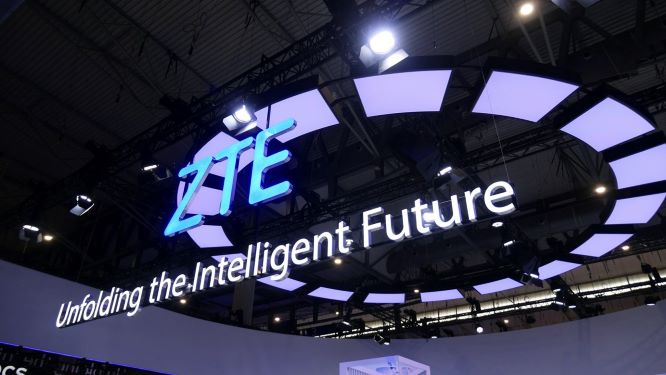
By Ray Le Maistre
ZTE has reported a 1 per cent year-on-year increase in full year revenues for 2023 to 124.25bn Chinese yuan (US$17.3bn), while the vendor’s gross margin improved to 41.53 per cent for the year compared with 37.19 per cent in 2022 due to a reduction in operating costs. With growth from the telecom sector now looking harder to come by, the vendor is focusing its investments on the infrastructure needs of the AI age.
Currently, though, it’s still telecom network infrastructure sales that are driving its top and bottom line, with the company’s domestic market still propping up its balance sheet.
The vendor’s sales to telecom operators increased slightly year on year to 82.76bn yuan (US$11.5bn), two-thirds of the annual total, while its revenues from enterprise and government department customers dipped by more than 7 per cent to 13.58bn yuan (US$1.89bn), accounting for 10.9 per cent of all sales, and its Consumer division sales (smartphones and other devices) also dipped, by 1.3 per cent, to 27.9bn yuan (US$3.9bn), equivalent to 22.5 per cent of total revenues.
Its domestic market continues to generate most of its revenues, accounting for 69.6 per cent of the total in 2023, while the rest of Asia (excluding China) delivered 11.4 per cent of all sales, Africa generated 5 per cent of revenues and Europe, Americas and Oceania collectively generated 14 per cent of total sales.
The numbers mean ZTE will retain its status as the fourth-largest telecom sector vendor globally, behind Huawei, Nokia and Ericsson, as it was in 2022.
Huawei is yet to publish its detailed full year results for 2023, but noted in its new year’s message that it expects to report full-year revenues of more than 700bn Chinese yuan (US$97.5bn) – see Huawei’s annual sales ramp by 10 per cent in 2023.
The questions for ZTE and Huawei is – what comes next?
China’s main operators have invested heavily in fibre access networks and 5G rollouts in recent years: According to national news agency Xinhua, the country’s Ministry of Industry and Information Technology (MIIT) has put the number of 5G base stations deployed across China at 3.38 million, quite an extraordinary number.
But that level of investment can’t and won’t continue, and with both Huawei and ZTE generating much of their sales from telecom network technology in their domestic market, the rest of this decade could present some growth issues, especially given that both vendors are regarded as security threats in certain parts of the world (mainly North America and Europe), which means international sales are tougher to grow.
For its part, ZTE has been investing heavily in its R&D processes in order to help create new business opportunities. The company noted in its full year report that it pumped 25.29bn yuan (US$3.5bn) into R&D in 2023, equivalent to slightly more than 20 per cent of its total revenues.
While it continues to invest in the development of advanced 5G (radio access network and core) and fibre access systems for telecom operator customers, it is also ploughing development funds into technology that can support the cloud and AI strategies of telcos and enterprise customers alike.
The company noted that in 2023 it “actively embraced the new opportunities and challenges arising from breakthroughs in artificial intelligence technology. Leveraging its extensive experience in both hardware and software development in the telecommunication field, the company intensified its investments in computing infrastructure, software platforms, large-scale models, and applications. With a comprehensive approach, it launched products like servers and storage, datacentre switches, datacentres, and the Nebula series of large-scale models. These endeavours accelerated the company’s strategic shift from connectivity towards a stronger focus on computing power.”
Such efforts will take a while to feed through into the company’s product portfolio and generate returns, but ZTE, much like Huawei, is clearly seeking to capture a decent slice of the upcoming AI-driven IT infrastructure investments not only in China but also in the international markets, such as across Africa and elsewhere in Asia, where it already has a business foothold.
- Maistre is Editorial Director at TelecomTV.



